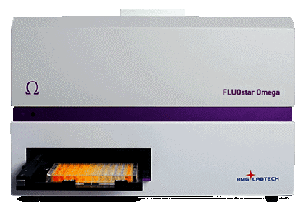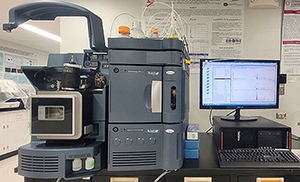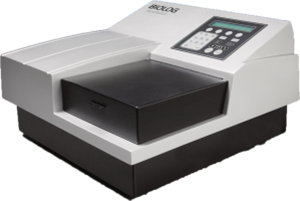Laboratory - ChEMTox Laboratory
Laboratory Equipment
The laboratory counts with multiple instrumentations that can be used by collaborators researchers as well.
FluoStar OMEGA (BMG LABTECH):

The FLUOstar® Omega is a multi-mode microplate reader with six detection modes. It utilizes an ultra-fast UV/vis spectrometer or filters for absorbance as well as highly sensitive filters for all other detection modes. The FLUOstar Omega is the ideal plate reader for life science applications.
For more information: https://www.bmglabtech.com/fluostar-omega/
Protein Simple a Biotechne Brand Jess:

Jess automates traditional Western blotting while maximizing multiplexing with multiple detection channels. Automation of protein separation and immunodetection eliminates many of the tedious, error-prone steps of traditional Western blotting which limit data quality.For more information: https://www.proteinsimple.com/jess.html
Nucleocounter NC-3000 (Chemometec)

The NucleoCounter® NC-3000™ advanced image cytometer utilizes fluorescence imaging to characterize cell properties. The instrument performs high-speed plug-and-play analytical assays of mammalian, yeast, and insect cells.
For more information: https://bit.ly/3N2Pu74
UPLC-Mass Spectrometer

Waters UPLC Acquity H Class. With industry-leading separations performance, the ACQUITY UPLC H CLASS provides new possibilities of maximizing the resolution and sensitivity of your methods; enhancing the characterization of samples, while improving productivity to advance the science of your laboratory/
Olympus FSX100 Inverted Microscope

The FSX100 all-in-one microscope provides a compact, innovative plug-and-play solution for bright field, phase contrast and fluorescence microscopy. The FSX100 combines the highest quality, state-of-the-art hardware and smart and intuitive user-friendly software that guides the user to brilliant images.
For more information: https://bit.ly/3whKhkX
BioLog System

Biolog’s advanced phenotypic technology provides valuable information on the properties of strains, in addition to a species-level identification.
For more information: https://bit.ly/3MZMyIc
